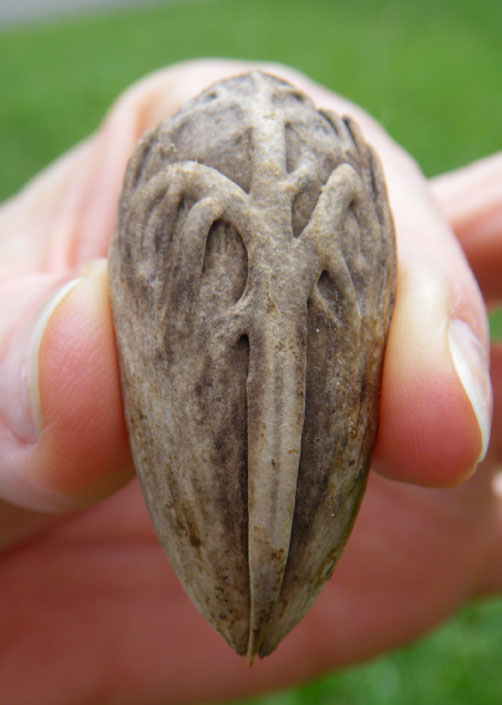Discovering secrets in plain sight on a walking tour

One of the best experiences at the garden is a walking tour. I checked out two tours recently and discovered things about the garden and its plants that I never knew. Walking tours are lead by well-informed volunteers and inevitably launch friendly exchanges among participants. Tours don’t cover the entire 83 acres, but are confined to two areas easily covered in 45 minutes: the palm and tropical fruit area of the garden, and the arboretum, vine pergola and spiny forest displays.
 |
|
This cycad was given by |
Sima Siegel began her palm and cycad tour at the cycad circle. She showed us a cycad donated by Col. Robert Montgomery when he founded the garden back in 1938. It’s Macrozamia moorei, from Queensland, Australia, and it wears a lovely coat of resurrection fern on its substantial trunk. Sima also pointed out the oldest garden resident, another cycad. This one, Dioon edule, was acquired from a botanical garden in Scotland and is 260 years old, she said.
Sima leads us through the palmetum describing the intricacies and features of many species. The foxtail palms, discovered in the 1980s in Australia, have bushy fronds that resemble a fox’s tail. The lady palms create useful hedges by branching beneath the ground, and the triangle palm arranges its fronds in a triangular crown.
 |
| Latania seed is beautiful. |
Latania palms are among those species that are dioecious, having male flowers on one plant and female flowers on another. The seed of a Latania that Sima showed us looks as if it had been beautifully carved, but it was a natural pattern. However, buttons and other items are carved from seeds of the ivory nut or tagua nut palm. Those seeds sometimes are referred to as vegetable ivory.
Two stories are told about how the zombi palm (Zombia antillarum) from Haiti came by its name: One that the spines on its trunk are used in voodoo; and the other is that after they die, they don’t fall over but seem to remain as living dead in the landscape.
The huge fronds of the oil palms – one species is from South America and a second is from Africa – rise skyward like geysers. Oil is pressed from the seeds, and the development of plantations in Asia is among the chief threats to the endangered orangutan.
We ended our walk at the tropical fruit pavilion, where Sima pointed out dwarf pomegranates, tamarinds, guavas, Malay apples and cactus that produce the increasingly popular dragon fruit.
We took the second tour given by Carolann Baldyga on Wednesday. Beginning at the ylang-ylang tree just beyond the visitors center, she told tourists from Great Britain and New Jersey that it takes 70 truckloads of the tree’s fragrant flowers to produce one ounce of Chanel No. 5.
 |
| Carolann Baldyga leading a walking tour. |
At the floss silk tree, she told how the flowering tree, related to kapok, produced pods full of“lovely cottony stuff” that once was used to make life preservers. Cecropia leaves, when dried, make a beautiful addition to floral arrangements, while the tree, which may grow at a rate of 7 feet a year, harbors ants in hollow parts of the twigs. The ants feed on a special sugary substance produced by the tree and in turn protect the tree against other insects.
Crushed leaves from allspice and bay rum trees delighted garden visitors with their aromas, prompting a UK visitor to says, “You’ve pointed out things we wouldn’t have found ourselves.’’
Feathery or pinnate palm fronds and palm-shaped or palmate fronds came under study, as did the interior of a palm trunk, which has no growth rings like those found in temperate trees. “How do you tell its age,” asked a visitor. By knowing its growth habit and how long it takes to reach a certain size.
Passing bougainvillea (“the actual flower is the white part in the center”), and stopping before the garden’s tallest tree, Carolann explained that each of the garden’s plants has a record, telling the origin, who collected it and when. Tags found on the individual specimens tell the year collected, the botanical name and common name, if there is one, and a bar code for record keeping – which is the way a botanical garden is distinguished from a park, which does not maintain such records.
About half way through the walk, a possibly reluctant visitor changed her mind. “I think we should finish this. She’s excellent.’’
